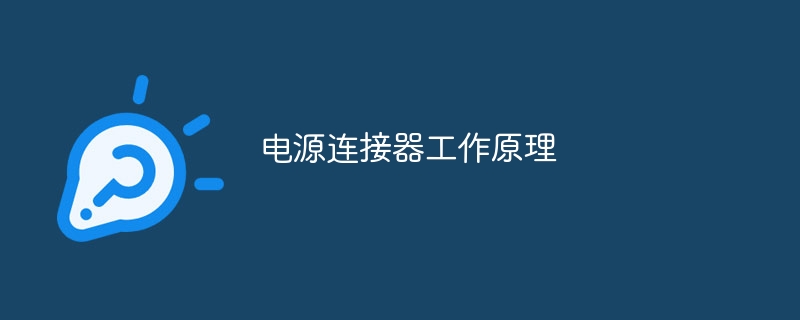Home >Common Problem >How the power connector works
How the power connector works
- 尊渡假赌尊渡假赌尊渡假赌Original
- 2024-01-16 15:54:58982browse
The working principle of the power connector is mainly in two aspects: "power transmission" and "signal transmission": 1. The power connector is mainly used to connect the power supply line to the power interface inside the device to achieve power transmission; 2. It has the function of signal transmission. The power wire is used to transmit current, while the data line is used to transmit digital signals.

#The working principle of the power connector mainly involves two aspects: power transmission and signal transmission.
Power transmission:
The power connector is mainly used to connect the power supply line to the power interface inside the device to achieve power transmission. Typically, a power connector consists of a plug and a socket. The plug is connected to the power cord, and the socket is connected to the power interface inside the device. When a plug is inserted into an outlet, the metal contacts between the two create an electrical connection, allowing electricity to pass from the plug through the contacts and into the interior of the device, providing the required power.Signal transmission:
In addition to power transmission, some power connectors also have signal transmission functions. For example, the USB interface is a common power connector that can transmit power and data signals. In this case, the power connector works on two fronts: the power wires carry electrical current, and the data wires carry digital signals. The metal contacts between the plug and the socket are designed to connect power wires and data wires respectively to realize the transmission of power and signals.
Generally speaking, power connectors establish an electrical connection through plugs and sockets, supply power inside the device, and transmit signals when needed. Different types of power connectors have different structures and working principles, but they are all designed to provide reliable power and signal transmission.
The above is the detailed content of How the power connector works. For more information, please follow other related articles on the PHP Chinese website!

